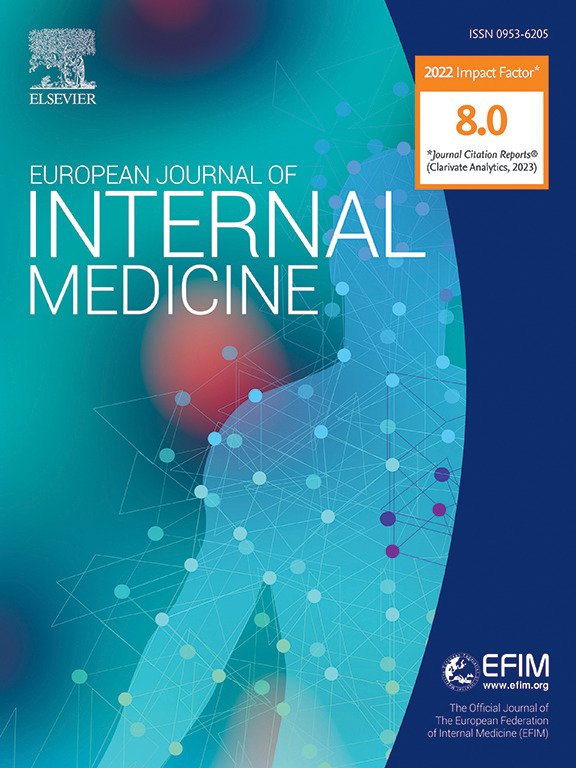Comparative analysis of obesity indices in discrimination and reclassification of cardiovascular disease risk: The ATTICA study (2002–2022)
IF 5.9
2区 医学
Q1 MEDICINE, GENERAL & INTERNAL
引用次数: 0
Abstract
Background
Despite the established link between obesity and cardiovascular disease (CVD), the optimal anthropometric index for risk prediction remains uncertain.
Aims
This prospective cohort study aimed to compare various anthropometric indices for their association with 20-year atherosclerotic cardiovascular disease (ASCVD) risk in a healthy adult population and to assess their incremental predictive value.
Methods
In 2002, n = 3,042 adults free of CVD, residing in Athens metropolitan area, in Greece, were recruited. A 20-year follow-up was conducted in 2022, comprising n = 2,169 participants, of which n = 1,845 had complete data on both CVD occurrence and anthropometric measures.
Results
Almost all the studied anthropometric measures were significantly associated with 20-year ASCVD incidence. However, after full adjustment, none of these measures retained a significant association. The inclusion of any individual obesity index within the SCORE2 model enhanced the model's discriminatory power, while the continuous NRI exhibited positive values, suggesting improved risk reclassification. The indices linked to adipose tissue dysfunction exhibited greater efficacy in distinguishing and reclassifying CVD risk beyond SCORE2. Stratified analysis according to obesity and metabolic health status revealed that the optimal obesity index varies according to individual obesity and metabolic health profiles.
Conclusion
Obesity indices are strongly associated with long-term risk of ASCVD, underscoring the major role of excessive body fat in the pathogenesis of this condition. The inclusion of an obesity index in a CVD risk model significantly enhances its predictive accuracy and reclassification of risk, emphasizing the importance of these indices in refining CVD risk assessment among the general population.

求助全文
约1分钟内获得全文
求助全文
来源期刊
CiteScore
9.60
自引率
6.20%
发文量
364
审稿时长
20 days
期刊介绍:
The European Journal of Internal Medicine serves as the official journal of the European Federation of Internal Medicine and is the primary scientific reference for European academic and non-academic internists. It is dedicated to advancing science and practice in internal medicine across Europe. The journal publishes original articles, editorials, reviews, internal medicine flashcards, and other relevant information in the field. Both translational medicine and clinical studies are emphasized. EJIM aspires to be a leading platform for excellent clinical studies, with a focus on enhancing the quality of healthcare in European hospitals.

 求助内容:
求助内容: 应助结果提醒方式:
应助结果提醒方式:


